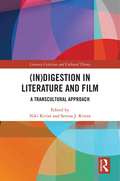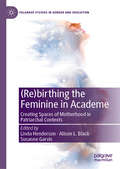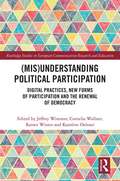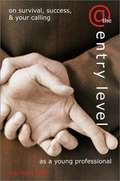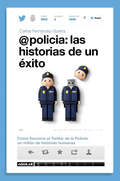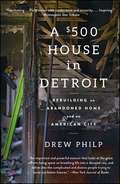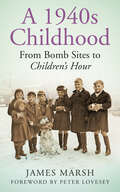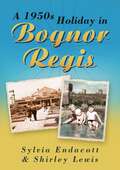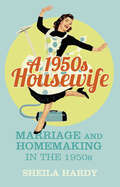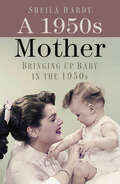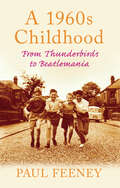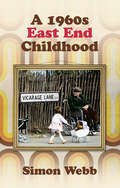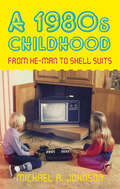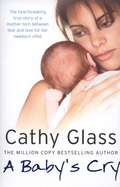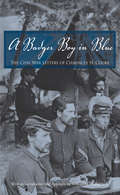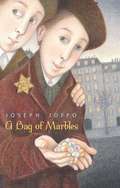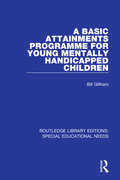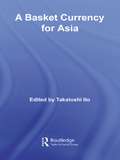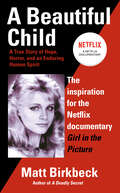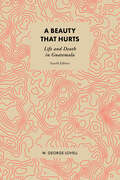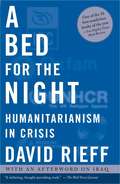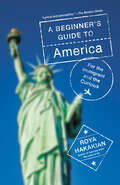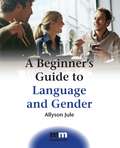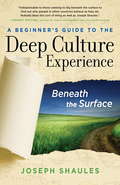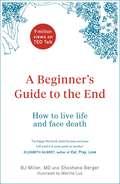- Table View
- List View
: A Transcultural Approach (Literary Criticism and Cultural Theory)
by Niki Kiviat(In)digestion in Literature and Film: A Transcultural Approach is a collection of essays spanning diverse geographic areas such as Brazil, Eastern Europe, France, Ireland, Italy, Japan, Mexico, South Korea, Taiwan and the United States. Despite this geographic variance, they all question disordered eating practices represented in literary and filmic works. The collection ultimately redefines disorder, removing the pathology and stigma assigned to acts of non-normative eating. In so doing, the essays deem taboo practices of food consumption, rejection and avoidance as expressions of resistance and defiance in the face of restrictive sociocultural, political, and economic normativities. As a result, disorder no longer equates to "out of order", implying a sense of brokenness, but is instead envisioned as an act against the dominant of order of operations. The collection therefore shifts critical focus from the eater as the embodiment of disorder to the problematic norms that defines behaviors as such.
: Creating Spaces of Motherhood in Patriarchal Contexts (Palgrave Studies in Gender and Education)
by Susanne Garvis Alison L. Black Linda HendersonThis book engages expansively with the concept of motherhood in academia, to offer insights into re-imagining a more responsive higher education. Written collaboratively as international, interdisciplinary and intergenerational collectives, the editors and contributors use various ways of understanding ‘motherhood’ to draw attention to – and disrupt – the masculine structures currently defining women’s lives and work in the academy. Shifting the focus from patriarchal understandings of academe, the narratives embrace and champion feminist and feminine scholarship. The book invites the reader to question what can be conceived when motherhood is imagined more expansively, through lenses traditionally silenced or made invisible. This pioneering volume will be of interest and value to feminist scholars, as well as those interested in disrupting patriarchal academic structures.
: Digital Practices, New Forms of Participation and the Renewal of Democracy (Routledge Studies in European Communication Research and Education)
by Jeffrey Wimmer Cornelia Wallner Rainer Winter Karoline OelsnerThe practices of participation and engagement are characterised by complexities and contradictions. All celebratory examples of uses of social media, e.g. in the Arab spring, the Occupy movement or in recent LGBTQ protests, are deeply rooted in human practices. Because of this connection, every case of mediated participation should be perceived as highly contextual and cannot be attributed to one (social) specific media logic, necessitating detailed empirical studies to investigate the different contexts of political and civic engagement. In this volume, the theoretical chapters discuss analytical frameworks that can enrich our understanding of current contexts and practices of mediated participation. The empirical studies explore the implications of the new digital conditions for the ways in which digitally mediated social interactions, practices and environments shape everyday participation, engagement or protest and their subjective as well societal meaning.
@ The Entry Level: On Survival, Success, & Your Calling As A Young Professional
by Michael BallCash, Coercion, Cons, Whatever it takes to get unsuspecting grads to sign that offer letter, Corporate America is game. Because once it's finally plain that the entry level, in fact, is a hellish and demeaning place of grunt-work, brown-nosing, and mental drool, the ink's already dry and the newbies in bed. Way in, what with the pressure to keep post-college resumes stocked with "respectable" Fortune 500 firms. Instead, most early-stage workers end burying their dreams underneath their paycheck, suffering quietly through the frustration, depression, and thoughts of beating their manager with a stick. No more. @ The Entry Level is designed to lead you through the psychologies, philosophies, and strategies for succeeding in business' basement, but with the single-minded purpose of finding the work you were made to do. It's the first book ever to dispel the myths, whisper the tricks, and supply the tools to help you as a young professional: *Manage the transition from college to work *Negotiate the Entry Level Rite of Passage Navigate office politics and build your personal brand *Earn the promotion or transfer with the right fit *Locate a sturdy work - life balance *Uncover your values to make intelligent, healthy career decisions *Gain the courage to follow your passion and find your calling Further taking a hard look at the seduction of money, the silliness of company loyalty, and the side-effects of waiting until midlife to figure out what your job should mean, this is the indispensable guide for career freshmen seeking a deeper, richer working life. And for those who just need to keep breathing. Michael Ball is the founder and CEO of Career Freshman Company, an organization dedicated to helping young professionals discover success, passion, and fulfillment in their work. A disillusioned Big Five (now Four) consulting veteran and Silicon Valley startup survivor, he's found his own calling as an author, speaker, and career coach to college students and corporate grunts. He lives in Los Angeles.
@policía: las historias de un éxito
by Carlos Fernández GuerraDescubre el perfil de la Policía Nacional en Twitter, la cuenta oficial de seguridad más seguida del mundo. Gracias a su originalidad y sentido del humor, el Twitter de la Policía española ya cuenta con más de 1.000.000 de seguidores. Un millón de historias en una sola, una demostración del nuevo papel que tienen las instituciones y los ciudadanos en el siglo XXI. Con @policia, descubre una Policía comunicadora, revolucionaria y muy eficaz que busca que el ciudadano la conozca y participe de sus éxitos. Entérate de los retos, las campañas, las mejores anécdotas y los logros que se han llevado a cabo gracias a la ciudadanía usando la cuenta de @policia. Conoce a los héroes y villanos de Internet y las conmovedoras historias de cómo la sociedad actúa en situaciones límite ante la llamada de auxilio de @policia. Mira qué hay tras las bambalinas: un equipo de personas con sus fakes, sus historias, sus aspiraciones y muchas ganas de tuitear.Por su lenguaje cercano, orientado a impactar y simpatizar con el ciudadano, así como su visión crítica y humorística de la actualidad, es ya el modelo a seguir para otras muchas instituciones y entidades privadas de todos los ámbitos, que han optado también por este tono informal de comunicación en las redes. Se partícipe de los grandes aciertos y también de los polémicos errores o fakes de esta cuenta. Desde la exitosa petición de donantes de sangre para el accidente de tren de Santiago de 2013 hasta la puesta en marcha de nuevas formas de colaboración ciudadana como la #Tweetredada, con la que se ha conseguido atrapar a cientos de traficantes de droga en nuestro país. Todo esto aderezado con las pequeñas «cagadas», los momentos de tensión y los tuits más torpes de @policia. En este libro no solo encontrarás el relato del éxito de @policia, sino todas las historias humanas que lo han hecho posible. Un millón de historias en una sola, una demostración del nuevo papel que tienen las instituciones y los ciudadanos en el siglo XXI.
A $500 House in Detroit: Rebuilding an Abandoned Home and an American City
by Drew PhilpDrew Philp, an idealistic college student from a working-class Michigan family, withdraws from the comforts of life on a university campus in search of a place to live where he can make a difference. He sets his sights on Detroit, the failed metropolis of abandoned buildings, widespread poverty, and rampant crime—a complicated source of national fascination, often stereotyped and little understood. Arriving with no job, no friends, and no money, Philp is naïvely determined to fix the huge, broken city with his own hands and on his own terms. A year later, he saves up and buys a ramshackle house for five hundred dollars in the east side neighborhood known as Poletown and moves in. Philp gets what he pays for. The roomy Queen Anne he now owns has been abandoned for a decade and is little more than a clapboard shell on a crumbling brick foundation, filled with heaping piles of trash (including most of a chopped-up minivan), and missing windows, heat, water, electricity, and a functional roof. The landscape of the surrounding neighborhood resembles an urban prairie: overgrown fields dotted with houses that haven’t been demolished or burned to the ground—some of them well-maintained by Detroiters who have chosen to remain in the city, but many, like the Queen Anne, left vacant and in complete disrepair. Based on a BuzzFeed essay that resonated with millions of readers, A $500 House in Detroit is Philp’s raw and earnest account of rebuilding everything but the frame of his house, nail by nail and room by room. It’s also the story of a young man finding his footing in the city, the country, and his own generation. As he assimilates into the community of Detroiters around him, Philp guides readers through the city’s vibrant history and engages in urgent conversations about gentrification, racial tensions, and class warfare. We witness his concept of Detroit shift, expand, and evolve as his plan to save the city gives way to a life forged from political meaning, personal connection, and collective purpose. Part social history, part brash generational statement, part comeback story, A $500 House in Detroit is an intimate account of the tentative revival of an American city—home by home and person by person—and a glimpse at a new way forward for generations to come.
A 1940s Childhood: From Bomb Sites to Children's Hour
by Peter Lovesey James MarshDo you remember collecting shrapnel and listening to Children’s Hour? Carrying gas masks or sharing your school with evacuees from the city? The 1940s was a time of great challenge for everyone who lived through it. From the hardships and fear of a World War, with Britain’s towns and cities were being bombed on an almost nightly basis, to the trauma of being parted from ones parents and sent away to the country to live with complete strangers. For just over half of this decade the war continued, meaning food and clothing shortages became a way of life. But through it all, and afterwards, the simplicity of kids shone through. From collecting bits of shot down German aircraft to playing in bomb-strewn streets, kids made their own fun. Then there was the joy of the second half of this decade when fathers came home and fun things started up again. This trip down memory lane will take you through the most memorable and evocative experiences of growing up in the 1940s.
A 1950s Holiday in Bognor Regis
by Shirley Lewis Sylvia EndacottBognor Regis is situated on the south coast of Britain overlooking the English Channel. After more than two centuries as a seaside resort, the town is still attracting visitors, in no small part due to the clarity of its air. On the 18th of January 1787, the resort's founder, Sir Richard Hotham, laid a foundation stone marking the town as a "public bathing place ", a description that Bognor Regis has continued to earn and enjoy ever since. Throughout the decades seaside holidays have changed to reflect current fashions. Bognor Regis has been no different; rather like the ebb and flow of the tide, visitor numbers have risen, fallen and risen again according to the various fashions of the day. Accessibility by train from London was a major contributor to the number of visitors in the resort's early years. Coaches and Sunday school outings then came into prominence, followed eventually by the arrival of the car. As leisure time and money became more plentiful for all, a Sunday outing was replaced by a week at the seaside, then a fortnight's break. Today many people choose Bognor Regis for a weekend away or a four day mid-week break, spending their main holiday time abroad as is the current fashion. Whatever the reason, the attraction of the sea is still strong and will continue to draw people from the towns and cities to the beaches for a paddle in the sea. Bognor Regis continues to attract visitors to its friendly beaches and by its regular appearance at the top of the National Sunshine League.
A 1950s Housewife: Marriage and Homemaking in the 1950s
by Sheila HardyBeing a housewife in the 1950s was quite a different experience to today. After the independence of the wartime years, women had to leave their jobs when they married and support their husband by creating a spotless home, delicious meals and an inviting bedroom. A 1950s Housewife collects heart-warming personal anecdotes from women who embarked on married life during this fascinating post-war period, providing a trip down memory lane for any wife or child of the 1950s. This book will prove an eye-opener for those who now wish they had listened when their mothers attempted to tell them stories of the ‘old days’, and will provide useful first-hand accounts for those with a love of all things kitsch and vintage. From ingenious cleaning tips, ration-book recipes and home decor inspiration, the homemaking methods of the fifties give an entertaining and poignant insight into the lives of 1950s women.
A 1950s Mother: Bringing up Baby in the 1950s
by Sheila HardyEmbarking on motherhood was a very different affair in the 1950s to what it is today. From how to dress baby (matinee coats and bonnets) to how to administer feeds (strictly four-hourly if following the Truby King method), the childrearing methods of the 1950s are a fascinating insight into the lives of women in that decade.In A 1950s Mother, author, mother and grandmother Sheila Hardy collects heart-warming, personal anecdotes from those women who became mothers during this fascinating post-war period. From the benefits of ‘crying it out’ and being put out in the garden to gripe water and Listen with Mother, the wisdom of mothers from the 1950s reverberates down the decades to young mothers of any generation and is a hilarious and, at times, poignant trip down memory lane for any mother or child of the 1950s.
A 1960s Childhood: From Thunderbirds to Beatlemania
by Paul FeeneyDo you remember Beatlemania? Radio Caroline? Mods and Rockers? The very first miniskirts? Then the chances are you were born in the or around 1960.To the young people of today, the 1960s seems like another age. But for those who grew up in this decade, school life, 'mod' fashions and sixties pop music are still fresh in their minds. From James Bond to Sindy dolls and playing hopscotch in the street, life was very different to how it is now. After the tough and frugal years of the fifties, the sixties was a boom period, a time of changed attitudes and improved lifestyles. With chapters on home and school life, games and hobbies, music and fashion, alongside a selection of charming illustrations, this delightful compendium of memories will appeal to all who grew up in this lively era. Take a nostalgic look at what it was like to grow up during the sixties and recapture all aspects of life back then.
A 1960s East End Childhood
by Simon WebbDo you remember playing in streets free of traffic? Dancing to the Beatles? Watching a man land on the Moon on TV? Waking up to ice on the inside of the windows? If the answer is yes, then the chances are that you were a child in the 1960s. This delightful compendium of memories will appeal to all who grew up in the East End during the Swinging Sixties. With chapters on games and hobbies, school and holidays, this wonderful volume is sure to jog memories for all who remember this exciting decade.
A 1980s Childhood: From He-Man to Shell Suits
by Michael A JohnsonDo you remember trying to solve the Rubik’s cube whilst dressed in your He-Man picture pyjamas?Did you try to make ‘cool’ sound effects with your mouth like Jones from Police Academy?Or maybe you swooned over Scott and Charlene’s (aka Jason and Kylie’s) wedding of the year?If that sounds like you, there’s no mistaking you were a child of the eighties. Rev up your DeLorean, switch on the Flux Capacitor and take a cruise back through the decade that made you the person you are today. This amusing and entertaining collection of reminiscences will jog the memories of all who grew up in the same decade where greed was good, mullets were cool and white dog poo littered the streets.
A Baby's Cry
by Cathy GlassWhen Cathy is first asked to foster one-day old Harrison her only concern is if she will remember how to look after a baby. But upon collecting Harrison from the hospital, Cathy realises she has more to worry than she thought when she discovers that his background is shrouded in secrecy. She isn't told why Harrison is in foster care and his social worker says only a few are aware of his very existence, and if his whereabouts became known his life, and that of his parents, could be in danger. Cathy tries to put her worries aside as she looks after Harrison, a beautiful baby, who is alert and engaging. Cathy and her children quickly bond with Harrison although they know that, inevitably, he will eventually be adopted. But when a woman Cathy doesn't know starts appearing in the street outside her house acting suspiciously, Cathy fears for her own family's safety and demands some answers from Harrison's social worker. The social worker tells Cathy a little but what she says is very disturbing. How is this woman connected to Harrison and can she answer the questions that will affect Harrison's whole life?
A Badger Boy in Blue: The Civil War Letters of Chauncey H. Cooke
by William Mulligan Jr.The Civil War letters of a young Wisconsin soldier, previously published in the Wisconsin Magazine of History, 1920-1922, are made available for the first time to a wide audience.
A Bag of Marbles
by Joseph Joffo Martin SokolinskyWhen Joseph Joffo was ten years old, his father gave him and his brother fifty francs and instructions to flee Nazi-occupied Paris and, somehow, get to the south where France was free.
A Basic Attainments Programme for Young Mentally Handicapped Children (Routledge Library Editions: Special Educational Needs #26)
by Bill GillhamFirst published in 1987. Most non-handicapped children entering school are prepared for the school curriculum in that they have acquired, incidentally, a range of skills that are needed for school-type attainments (reading, numbers, etc.). However, by definition mentally handicapped children make slower progress and do not learn so easily in this indirect fashion. This book is a manual presenting a programme which sets specific objectives and methods by which mentally handicapped children can be taught the basic prerequisites of school success. Implicit in this intention is the assumption that many such children can and should be admitted to ordinary schools. A linked assumption is that parents and non-specialist teachers will therefore need practical guidance in this area. The book will also be of value to teachers in special schools for the handicapped because it focuses on the difficult-to-teach basic prerequisites of school attainments. Each chapter contains: ‘ceiling’ objectives; an outline summary of step-by-step objectives; an assessment-for-teaching checklist; background teaching activities; general teaching rules; and specific teaching procedures for each stage.
A Basket Currency for Asia (Routledge Studies in the Growth Economies of Asia #Vol. 65)
by Takatoshi ItoThe failure of the dollar peg to prevent the Asian currency crisis of 1997 to 1998 has highlighted the importance of the exchange rate regime in Asia and provoked much discussion as to what the alternatives are in terms of exchange rate systems. Bringing together extensive research on Asian basket currencies in one volume, this new text discusses whether a currency basket system is the answer, striking a balance between the theoretical and empirical. With strong policy implications for East Asia, the impressive team of contributors argue that for countries that have close economic relationships with several currency areas, it is well worth considering a currency basket system. The book also pursues the important idea of coordination failure, whereby if each individual country tries to adopt an optimal exchange rate given other neighbouring countries' policies, they may collectively fail to reach a region's optimal exchange rate regime. A Basket Currency for Asia is a topical and significant text that will appeal to students and scholars of international finance and Asian economics.
A Beautiful Child: A True Story Of Hope, Horror, And An Enduring Human Spirit
by Matt BirkbeckSharon Marshall was a brilliant and beautiful student whose future was filled with promise. But her murderous, fugitive father had drawn her into a lifetime of deception that became one of the most baffling cases in the annals of American crime.
A Beauty that Hurts: Life and Death in Guatemala
by W. George LovellWhen A Beauty That Hurts first appeared in 1995, Guatemala was one of the world’s most flagrant violators of human rights. An accord brokered by the United Nations brought a measure of peace after three decades of armed conflict, but the country’s troubles are far from over. George Lovell revisits Guatemala to grapple once again with the terror inflicted on its Maya peoples by a military-dominated state.
A Bed for the Night: Humanitarianism in Crisis
by David RieffTimely and controversial, A Bed for the Night reveals how humanitarian organizations are often betrayed and misused, and have increasingly lost sight of their purpose. Drawing on firsthand reporting from war zones around the world, David Rieff shows us what aid workers do in the field and the growing gap between their noble ambitions and their actual capabilities for alleviating suffering. He describes how many humanitarian organizations have moved from their founding principle of neutrality, which gave them access to victims, to encouraging the international community to take action to stop civil wars and ethnic cleansing. By calling for intervention, humanitarian organizations risk being seen as taking sides in a conflict and thus jeopardizing their access to victims. And by overreaching, the humanitarian movement has allowed itself to be hijacked by the major powers. Rieff concludes that if humanitarian organizations are to do what they do best -- alleviate suffering -- they must reclaim their independence.
A Beginner's Guide to America: For the Immigrant and the Curious
by Roya HakakianA stirring, witty, and poignant glimpse into the bewildering American immigrant experience from someone who has lived it. Also, a mirror held up to America.Into the maelstrom of unprecedented contemporary debates about immigrants in the United States, this perfectly timed book gives us a portrait of what the new immigrant experience in America is really like. Written as a "guide" for the newly arrived, and providing "practical information and advice," Roya Hakakian, an immigrant herself, reveals what those who settle here love about the country, what they miss about their homes, the cruelty of some Americans, and the unceasing generosity of others. She captures the texture of life in a new place in all its complexity, laying bare both its beauty and its darkness as she discusses race, sex, love, death, consumerism, and what it is like to be from a country that is in America's crosshairs. Her tenderly perceptive and surprisingly humorous account invites us to see ourselves as we appear to others, making it possible for us to rediscover our many American gifts through the perspective of the outsider. In shattering myths and embracing painful contradictions that are unique to this place, A Beginner's Guide to America is Hakakian's candid love letter to America.
A Beginner's Guide to Language and Gender
by Allyson JuleA Beginner's Guide to Language and Gender offers a broad and accessible introduction to the study of gender and language use for those new to the subject. The book introduces the theoretical and practical perspectives, including relevant frameworks necessary to understand ways in which language interacts with gender/sex in various settings, including: in media, in schools, in places of business, in places of worship, and at home.
A Beginner's Guide to the Deep Culture Experience: Beneath the Surface
by Joseph ShaulesWhen we leave and travel abroad, for pleasure or for business, we make a choice: to have a superficial “airport experience” at our destination, or to appreciate the hidden culture beneath the surface. A Beginner’s Guide to the Deep Culture Experience proposes a deep culture journey, encouraging travelers to pursue a meaningful cross-cultural experience. Sharing anthropologist Edward Hall’s conviction that becoming aware of our unconscious cultural programming is a transcendental challenge facing us all, author Joseph Shaules shows how the “deep culture experience” can teach us about ourselves. This practical book is an accessible introduction to intercultural communication without buzz words, theory or abstraction. If you travel internationally for work or simply enjoy the diverse cultures of the world, read this inspirational book before your next trip.
A Beginner's Guide to the End: How to Live Life to the Full and Die a Good Death
by Shoshana Berger BJ Miller"I wish I'd had this book when I needed it. Death and dying are not subjects that many people are comfortable talking about, but it's hugely important to be as prepared as you can be - emotionally, physically, practically, financially, and spiritually. This book may be the most important guide you could have." - Elizabeth Gilbert, author of Eat Pray Love ___________The end of a life can often feel like a traumatic, chaotic and inhuman experience. In this reassuring and inspiring book, palliative care physician Dr BJ Miller and writer Shoshana Berger provide a vision for rethinking and navigating this universal process. There are plenty of self-help books for mourners, but nothing in the way of a modern, approachable and above all useful field guide for the living. And all of us - young, old, sick and well - could use the help. After all, pregnant couples have ample resources available to them as they prepare to bring a new life into the world: Lamaze courses, elaborate birth plans, tons of manuals. Why don't we have a What to Expect When You're Expecting to Die book?An accessible, beautifully designed and illustrated companion, A Beginner's Guide to the End offers a clear-eyed and compassionate survey of the most pressing issues that come up when one is dying, and will bring optimism and practical guidance to empower readers with the knowledge, resources and tools they'll need to die better, maybe even with triumph.
